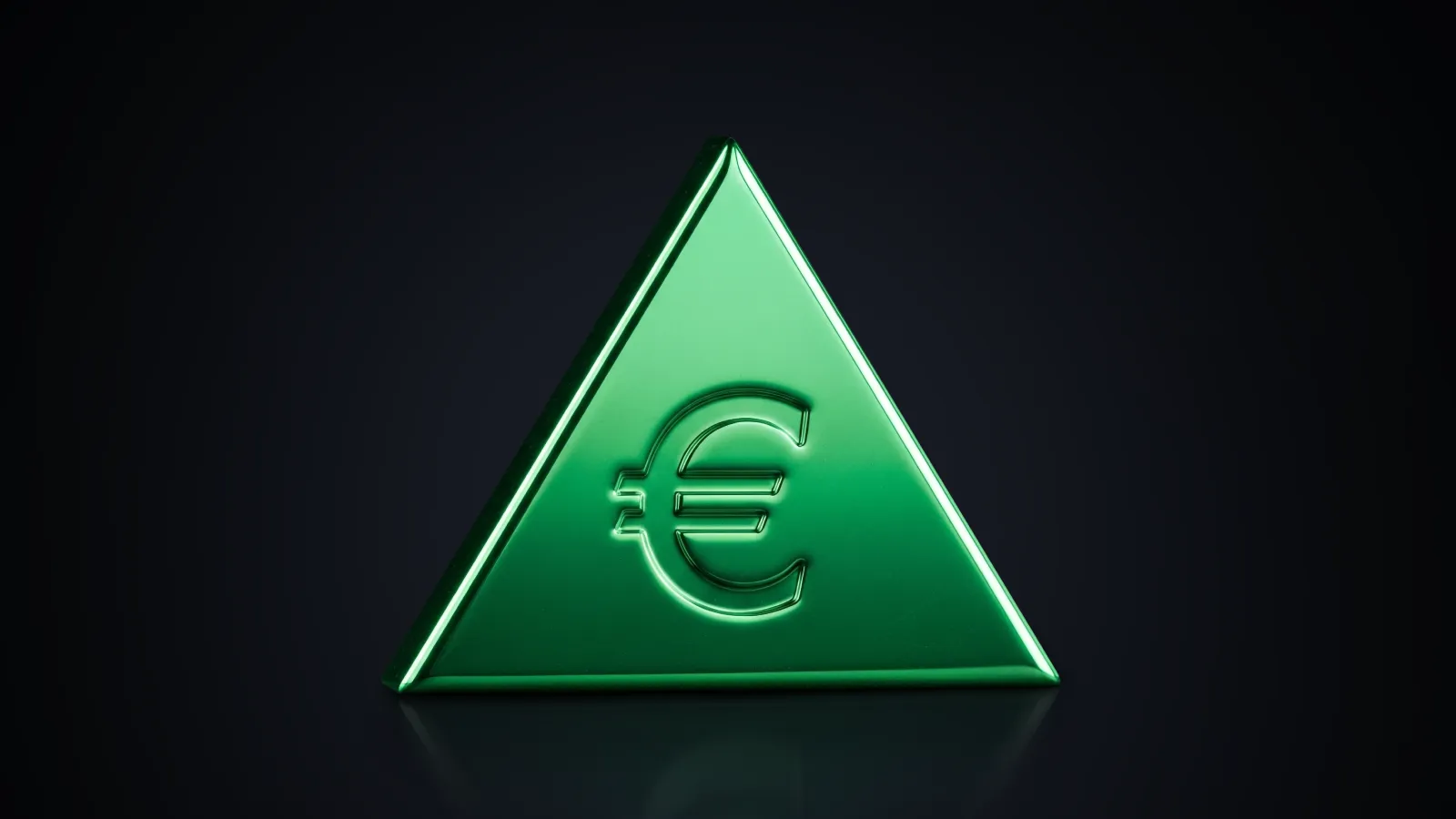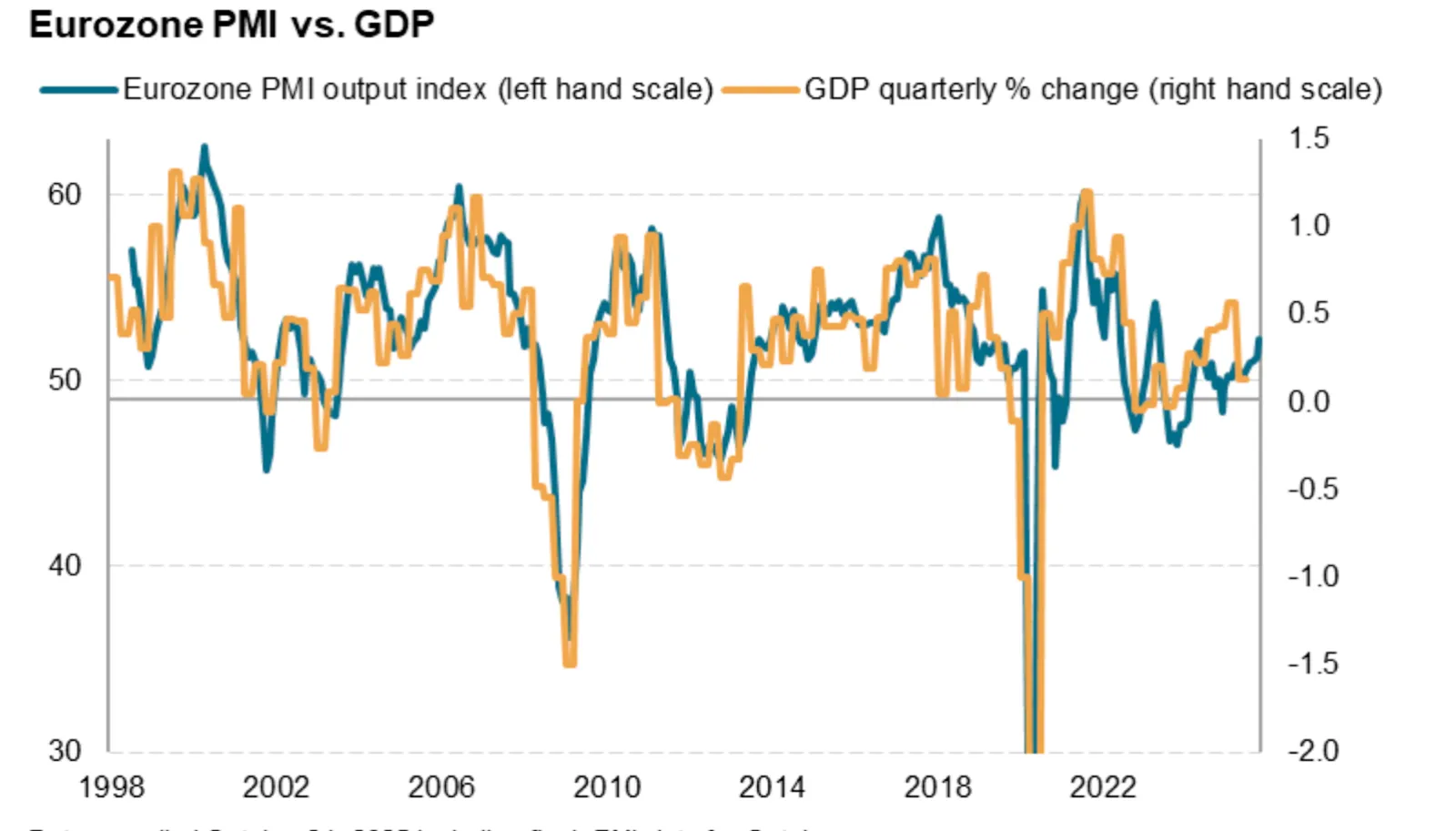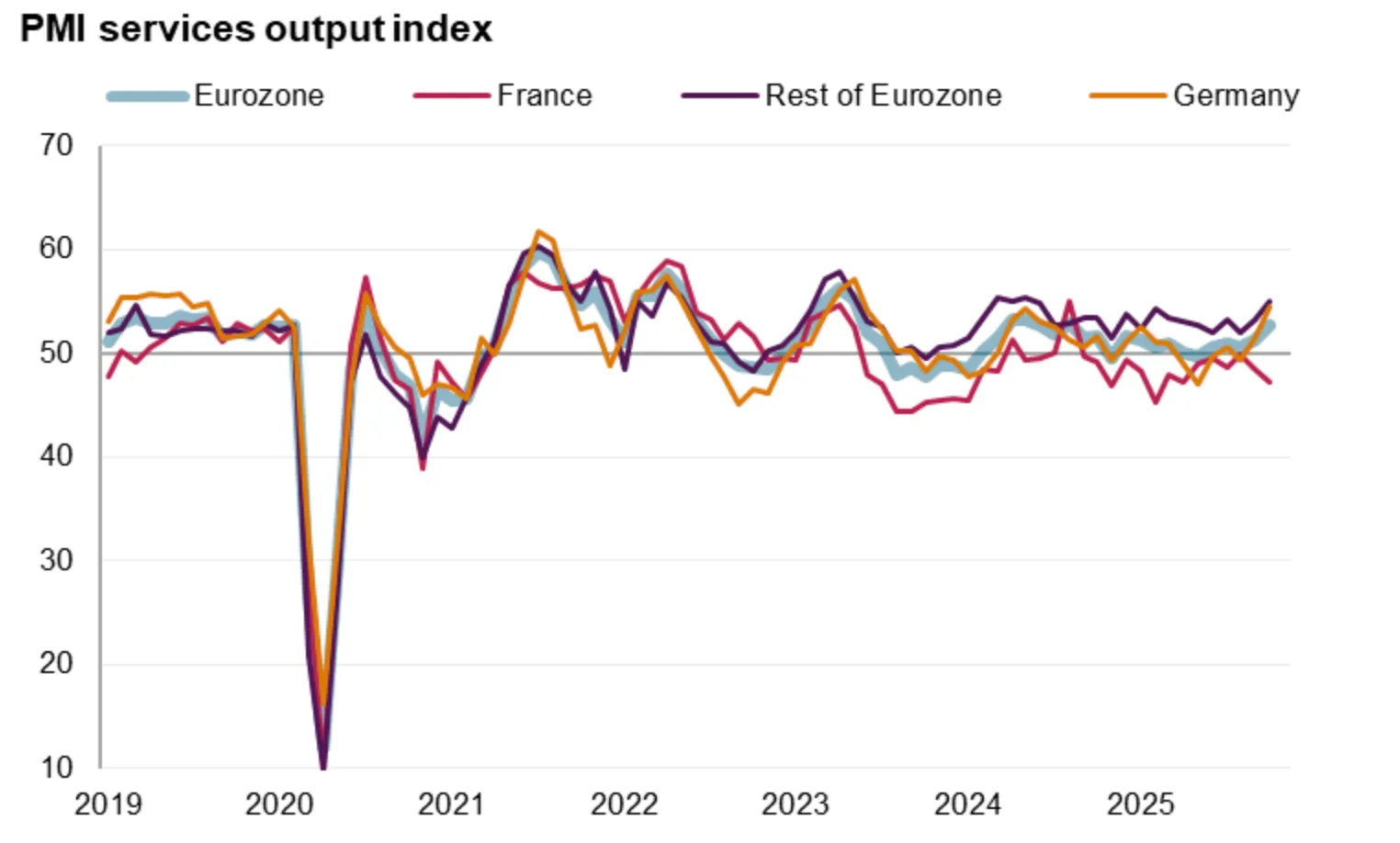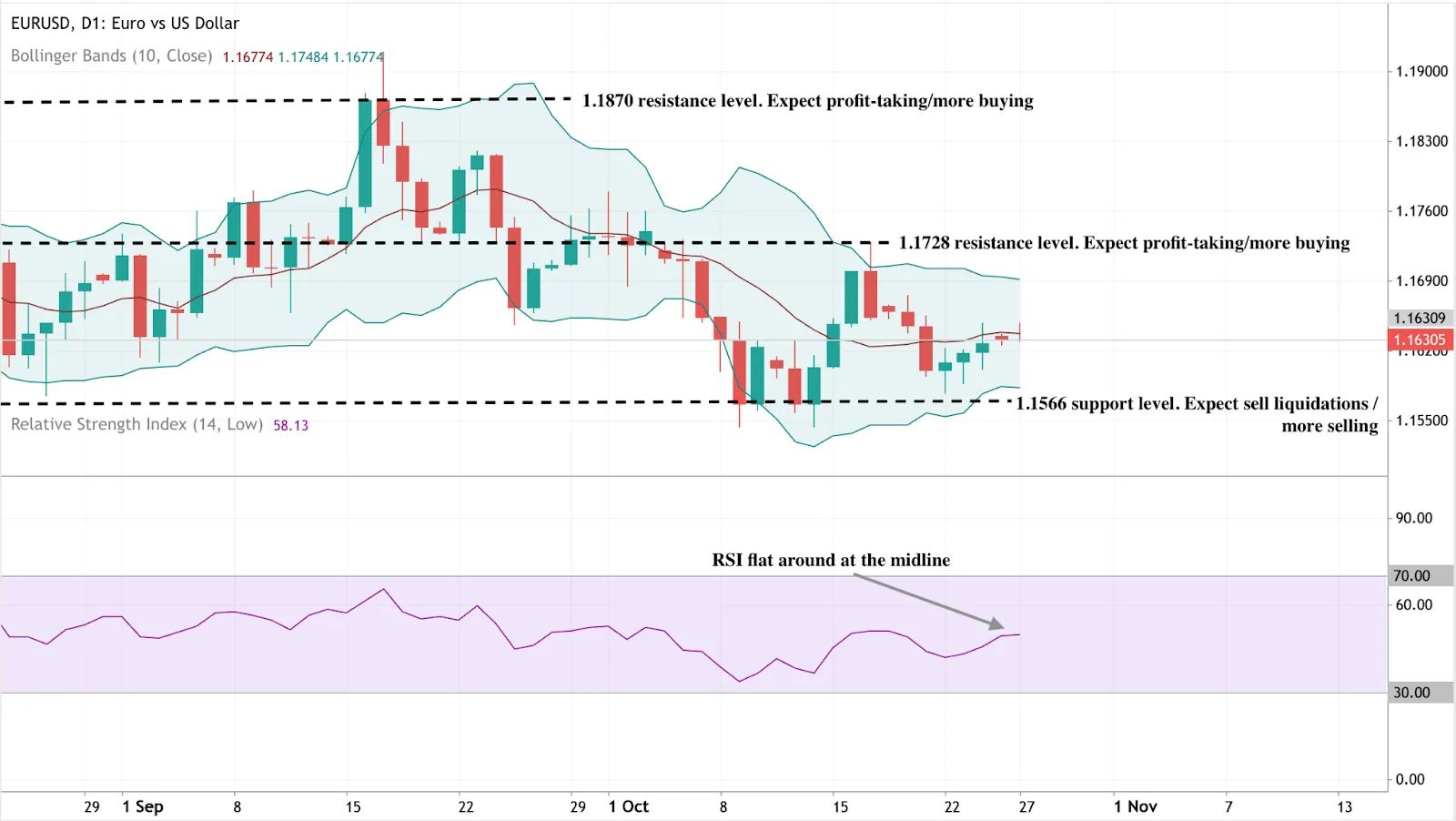EUR/USD forecast: Will the pair rally after the Eurozone’s rebound?
EUR/USD forecast: Will the pair rally after the Eurozone’s rebound?
EUR/USD forecast: Will the pair rally after the Eurozone’s rebound?

Eurozone business activity surged to a 17-month high in October, powered by Germany’s fastest private-sector growth in more than two years, while inflation held close to the European Central Bank’s (ECB) 2 per cent target. With the ECB pausing its rate-cut cycle and the U.S. Federal Reserve preparing to ease, traders see near-term potential for EUR/USD to approach 1.20.
Still, the rally remains fragile. France’s contraction, softening confidence, and uneven regional growth hint that Europe’s rebound may not have enough momentum to sustain a breakout.
Key takeaways
- The Hamburg Commercial Bank (HCOB) Flash Eurozone Composite Purchasing Manager’s Index (PMI) rose to 52.2 in October - the 10th consecutive month of expansion and the strongest reading since mid-2024.
- Germany’s services-driven upturn offset weakness in France, creating a split recovery across the bloc.
- Inflation pressures stayed contained, with services prices only marginally above the ECB’s long-term average.
- The ECB is likely to hold policy steady, while the Fed’s expected 25 bps cut could further weaken the U.S. dollar.
- Business confidence declined to a five-month low, revealing caution beneath the positive data.
- EUR/USD trades near 1.1650, supported by policy divergence but restrained by uneven fundamentals.
Eurozone PMI data: Economic activity hits a 17-month high
The Eurozone economy started the fourth quarter stronger than expected. The HCOB Flash Composite PMI, compiled by S&P Global, climbed to 52.2 from 51.2, easily topping forecasts for 51.0. Anything above 50 indicates expansion, marking ten straight months of growth.

New orders increased at the quickest pace in 2½ years, suggesting demand is picking up again.
"October’s flash PMIs suggest the euro-zone economy may have gained momentum at the start of the quarter."
- Adrian Prettejohn, Capital Economics
Germany led the charge, recording its most vigorous private-sector performance since early 2023, thanks to a strong services sector. The result lifted the euro and renewed hopes that Germany could stabilise regional growth.
France, meanwhile, slipped further into contraction as domestic demand weakened amid political and fiscal uncertainty.

Traders monitoring the data on Deriv MT5 see the PMI surge as a leading signal for near-term movement in EUR/USD, shaping expectations for the rest of Q4.
ECB interest rate decision: Holding the line as inflation steadies
Price growth across the services sector remained moderate, consistent with the ECB’s inflation target. Cyrus de la Rubia, chief economist at Hamburg Commercial Bank, noted the report “supports the ECB’s decision to pause further rate cuts.”
With inflation anchored near 2 per cent, policymakers are signalling confidence in the current stance. In contrast, the Federal Reserve is expected to trim rates by 25 basis points after September CPI eased to 3.0 per cent year-on-year. Core inflation slowed as well, strengthening the case for a dovish tilt.
This monetary divergence - ECB steady, Fed easing - has improved the euro’s relative appeal, particularly as the U.S. Dollar Index trades around 99, its weakest in months. Traders using Deriv MT5 can watch yield differentials and policy cues closely as drivers for future direction in the pair.

Confidence falls despite the rebound
Beneath the upbeat headlines, sentiment slipped.
- Business confidence retreated to a five-month low, signalling that firms remain wary about the outlook.
- Employment rose again, led by services hiring at the fastest pace since mid-2024.
- Manufacturing jobs, however, fell at the quickest rate in four months as export demand lagged.
Input-cost inflation cooled, but selling prices rose modestly, showing only mild price pressure. This combination - better growth but soft confidence - suggests the rebound could stall if orders slow or if political uncertainty intensifies.
Federal Reserve rate cut predictions and dollar weakness
The U.S. Dollar Index dipped below 99 after September’s softer inflation print confirmed expectations of a 25 bps Fed cut. The prospect of easier U.S. policy narrows the yield gap with Europe, supporting the euro.
Global risk sentiment also improved after U.S.–China trade talks in Kuala Lumpur reduced tariff tensions. China’s decision to delay rare-earth export restrictions and boost commodity imports further eased investor anxiety. Together, these developments have driven EUR/USD higher for four straight sessions, with prices stabilising near 1.1630.
EUR/USD market outlook: 1.20 or fade?
Bullish case
- Germany’s strength and a 17-month-high PMI underpin renewed optimism.
- The ECB’s steady stance supports euro yields against a softening dollar.
- Fed rate cuts and falling U.S. inflation narrow policy differentials.
- Improving trade sentiment could extend the rally.
Bearish case
- Ongoing French weakness and domestic political friction may cap growth.
- Fragile manufacturing and slowing orders could limit follow-through.
- A rebound in U.S. data or a less-dovish Fed tone could revive dollar demand.
Analysts generally view 1.16 as a support floor and 1.18 to 1.20 as key resistance. A break above 1.20 would likely need sustained German leadership and evidence of broader Eurozone recovery.
EUR/USD technical insight

On the charts, EUR/USD remains range-bound between 1.1870 resistance and 1.1566 support. The pair trades close to the mid-Bollinger Band, with the RSI hovering around 58, reflecting neutral momentum.
The narrowing bands imply fading volatility and the potential for a breakout. A move above 1.1728 could attract buyers targeting 1.1870, while a fall below 1.1566 may open the door to further weakness.
Such setups can be tracked directly on Deriv MT5, using volatility and momentum tools to confirm directional bias.
EUR/USD investment implications
For traders, the short-term bias in EUR/USD remains upward, supported by diverging monetary policy but tempered by uneven sentiment.
- Short-term trades: Buying dips near 1.1600 may offer opportunities toward 1.1850–1.20 if Fed dovishness holds and Eurozone data stay firm.
- Medium-term view: Caution remains essential - if confidence deteriorates or German output slows, the pair could retreat toward 1.1550.
- Macro angle: The ECB’s steadiness versus the Fed’s expected easing favours euro resilience through Q4, though external risks linger.
- Political watchpoints: France’s fiscal debate and renewed trade tensions could quickly test investor optimism.
Before entering new positions, traders can use Deriv’s trading calculator to estimate margin and pip values for precise risk management.
The performance figures quoted are not a guarantee of future performance.















